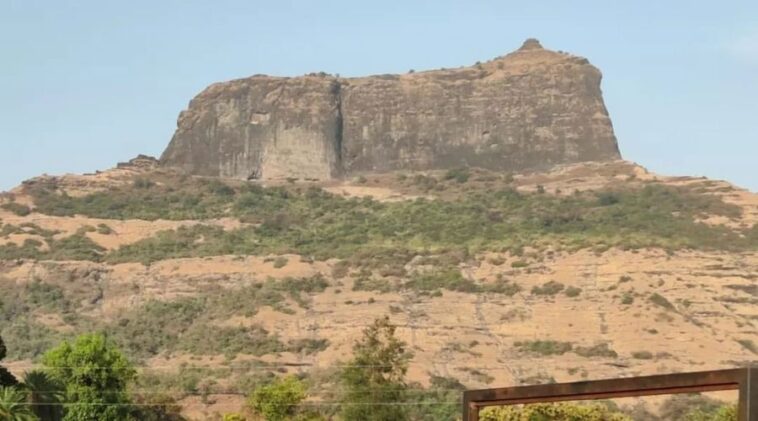Harihar Fort, also known as Harshagad, is a historic fortification located in the Nashik district of Maharashtra, India.
Situated atop a triangular rock massif, the fort is strategically positioned at an elevation of approximately 1,120 meters above sea level.
Specifically, Harihar Fort is in an area known as the Trimbak range. This subrange is a specific section within the larger Sahyadri mountain range.
The area surrounding the fort is characterized by rugged terrain, dense forests, and winding rivers, making it both picturesque and challenging to access.
The fort’s dimensions span approximately 40 meters in length and 20 meters in width. Its steep cliffs plunge to depths of around 600 meters below.
Furthermore, Harihar is renowned for its unique rock-cut staircase and the breathtaking views it offers of the surrounding landscapes.
Read also: Varanasi, Sacred Spiritual Hub with Temples Along the River
Contents
The Distinctive Rock-Cut Staircase Architecture
The fort is perched atop a triangular rock with sheer cliffs on all sides, making it virtually impregnable. Its unique shape has earned it the moniker “Sphinx of Maharashtra.”
At the summit of the fort stands a majestic temple dedicated to Lord Shiva, adding a spiritual aura to the site.
The temple’s architecture reflects a blend of Hindu and Islamic styles, indicative of the cultural amalgamation prevalent during its construction.
Moreover, one of the most iconic features of Harihar is the steep staircase carved into the rock face, known as “the staircase to heaven.”
Climbing these vertiginous steps requires both physical prowess and mental fortitude.
The Scenic Beauty of Harihar Fort
Harihar Fort’s allure lies in both its history, and the sweeping panoramas it provides.
Nestled in the Western Ghats, the fort offers stunning panoramic views of the surrounding landscape.
The fort provides a 360-degree view for witnessing lush greenery, rolling hills, and dense forests.
Furthermore, during the monsoon season, the entire region comes alive with cascading waterfalls, glistening streams, and a burst of vibrant vegetation.
Read also: Valle de Cocora, a Valley with Palm Trees and Cloud Forests
A Brief History of Harihar Fort
Harihar boasts a rich history that traces back to the Yadava dynasty of the 6th century.
Originally constructed during this era, the fort served as a watchtower to guard the trade route between Maharashtra and Gujarat.
Over the centuries, it changed hands multiple times, coming under the rule of various dynasties including the Bahmani Sultanate, the Mughals, and the Marathas.
One of the most notable chapters in the fort’s history is its capture by Chhatrapati Shivaji Maharaj in 1636.
The Maratha king recognized its strategic importance and undertook significant fortification efforts, enhancing its defensive capabilities. The fort remained under Maratha control until the British colonial period.

